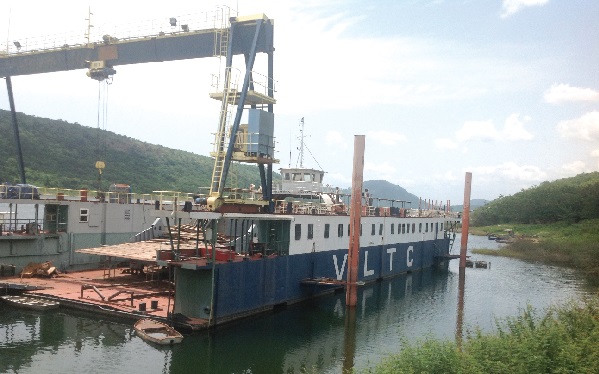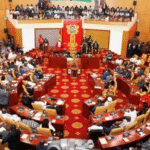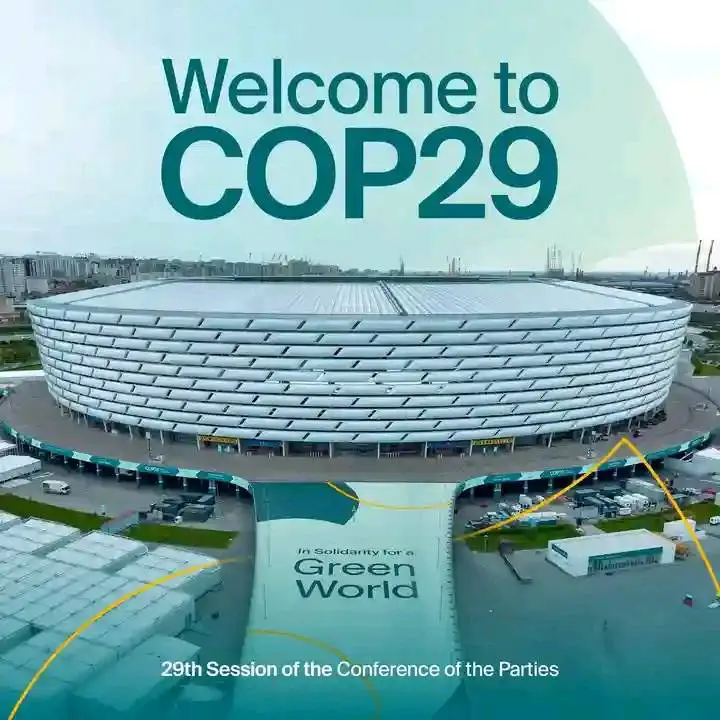In the latest chapter of ambitious national blueprints, Ghana is being sold the 24-Hour Economy.
The vision, as always, is breathtaking: a bustling Volta Lake transformed into a superhighway for commerce; modern ports clearing goods in minutes, not days; fresh produce from the north reaching European markets overnight.
It is a vision polished to perfection, designed to capture headlines and secure legacies.
But beyond the hope lies a dark and lethal truth—one so inconvenient it has been dangerously ignored. The very roads that must carry this new economy are already graveyards in the making.
This feature argues that while the 24-Hour Economy policy offers transformative opportunities for Ghana’s logistics and transport sector, its ultimate success is contingent upon elevating road safety from an afterthought to a core, non-negotiable prerequisite.
By juxtaposing the policy’s ambitious economic vision with the stark reality of night-time road fatalities, we will demonstrate that without a proactive safety strategy, the entire initiative is built on a foundation too dangerous to sustain. To fully grasp this dangerous disconnect, we must first examine the core logistical opportunities the policy presents.
The Promise & The Peril of the Plan
The policy outlines a fundamental restructuring of Ghana’s economy, transitioning from an import-dependent to a production-led, export-oriented model. Central to this transformation is the overhaul of the country’s logistics and transport infrastructure, primarily detailed under the CONNECT24 and BUILD24 sub-programmes. The core opportunities are structured around two pillars: inland water transport and port modernisation.
Volta Lake: A Vision of Prosperity Shadowed by the History of Peril
The policy’s plan to unlock the Volta Lake as an inland freight corridor is, on paper, a masterstroke. By transforming the underutilised lake into a primary artery for bulk goods, it promises to reduce logistics costs from over 40% to below 20% of the product value.
This strategic shift would not only boost economic competitiveness but also improve travel times on our major corridors by easing the burden of slow-moving heavy goods vehicles and their frequent breakdowns.
However, this transformative vision is shadowed by the perilous history of inland water transport across Africa, which serves as a sobering cautionary tale. The difference between a thriving economic artery and a channel of tragedy lies in learning from these past failures, which are often rooted in a catastrophic breakdown of regulatory control.
The evidence is stark and undeniable. In Tanzania, the 2018 MV Nyerere disaster on Lake Victoria, which claimed 228 lives, was a direct result of a poorly maintained vessel compounded by extreme overloading. An even more horrifying precedent is the 2011 sinking of the MV Spice Islander I, where over 1,500 people perished because a vessel licensed for 645 passengers was carrying more than 2,000—a blatant disregard for safety that points to a complete collapse in enforcement. These are not isolated incidents; the Congo River’s notorious “convoys of death” are a constant, grim reminder of how entire systems can become synonymous with danger when oversight is absent.
Therefore, for the Volta Lake plan to succeed without repeating these tragedies, the Ghana Maritime Authority (GMA) must be empowered and mandated to exercise ruthless and unwavering regulatory control. This is non-negotiable. Stringent enforcement must encompass vessel seaworthiness, a zero-tolerance policy for overloading of both cargo and passengers, mandatory crew certification, and the establishment of a robust and well-rehearsed emergency response protocol. Without this regulatory backbone, the dream of a vibrant inland waterway could very quickly become Ghana’s next national disaster.
Modernising Ports and Expanding Trade Gateways: A Double-Edged Sword for Road Safety
A cornerstone of the 24-Hour Economy policy is the ambitious plan to modernise Ghana’s trade gateways by streamlining customs at Tema Port, transforming Tamale Airport into a northern air cargo hub, and establishing inland Dry Ports. On the surface, this strategy promises a significant road safety dividend by shifting the country’s logistical center of gravity northward and reducing the sheer volume of heavy goods vehicles (HGVs) embarking on the perilous, long-haul journey to the coast.
One of the most immediate benefits is a direct assault on driver fatigue, a notorious killer on our roads. Currently, drivers can lose days waiting for clearance at Tema Port, a delay that builds immense stress and incentivises risky, non-stop driving on the return journey to make up for lost time. By streamlining this process and establishing inland clearance depots at locations such as Tamale and Yapei, the policy could drastically reduce these waiting periods, ensuring drivers are more alert and less pressured behind the wheel.
However, this policy is not a silver bullet; it is a redeployment of risk. While it may alleviate pressure on major national highways, it dangerously concentrates traffic and creates new threats in areas ill-equipped to handle them. The strategy funnels hundreds of HGVs and smaller transport vehicles onto local and feeder roads, creating a new “last-mile nightmare.”
We risk solving congestion on the N1 highway only to create deadlier bottlenecks on community roads, where vulnerable pedestrians and motorcyclists will be exposed to intense, heavy traffic for the first time.
Furthermore, the area around each new hub will transform into a 24/7 industrial traffic zone, replicating the chaotic, high-risk environment currently seen around Tema Port. Without proactive traffic management, upgraded local infrastructure, and strict enforcement, these new economic centres could quickly become accident blackspots, trading one set of road safety problems for another.
The Road Safety Imperative: Confronting Ghana’s Brutal Baseline
To understand the genuine peril of the 24-Hour Economy, we must first confront the brutal reality of our roads today. As a recent SSATP report reminds us, transportation is more than asphalt and infrastructure; it is about the systems, institutions, and people responsible for managing it safely. On this front, Ghana’s system is challenged with a staggering annual toll.
Nearly 2,500 Ghanaians are killed, 10,000 are injured, and 16,000 crashes are recorded every year. This is not just a statistic; it is a relentless national tragedy, disproportionately stealing the lives of our most productive citizens, with 76% of victims aged between 18 and 55, and 85% being male.
This carnage is the predictable result of a broken system, plagued by lax regulations, poor road design, and a pervasive lack of enforcement. Now, the 24-Hour Economy proposes to supercharge this challenged system by dramatically increasing motorisation during the high-risk night-time hours. While the policy rightly aims to reduce the number of heavy goods trucks, it fails to account for the inevitable surge in passenger vehicles. This creates a dangerous blind spot, setting the stage for our existing road safety crisis to escalate into an uncontrollable epidemic.
The Unspoken Danger: A Predictable Crisis on Our Roads
Data from the National Road Safety Authority’s systematic crash investigations since 2010 offers a chilling and unambiguous warning. These findings are not just statistics; they are forecasts of a predictable crisis.
Half of Ghana’s deadliest investigated road accidents, involving 223 deaths and 341 injuries, occur in the dead of night, specifically between 12 midnight and 5 am. The pattern of these crashes is terrifyingly consistent: a staggering 90% are head-on collisions, occurring after a driver veers out of their lane and into oncoming traffic.
The root causes are a familiar and deadly cocktail of driver behaviour. Sixty per cent (60%) of these incidents stem from deliberate recklessness, wrongful overtaking and speeding, while the remaining 40% are attributed to sheer exhaustion, with drivers momentarily falling asleep at the wheel.
The 24-Hour Economy is set to flood our roads with commercial and passenger traffic during these exact high-risk hours. Given this data, we are facing a predictable crisis in the making. To ignore this evidence would not only be poor planning but also a catastrophic failure of policy.
The Case for a Prioritised National Road Safety Strategy
The government must treat road safety as a headline priority, on par with logistics and infrastructure. The current approach is too passive. The solution to this looming crisis does not require reinventing the wheel; it requires the political will to support road safety stakeholders in executing a decisive, multi-front strategy. The following measures are not a menu of options; they are a coordinated plan of action.
I. Re-engineering the Road Environment for Safety
This is about fundamentally altering the physical environment to make it more forgiving of human error.
- Dualise Our Deadliest Corridors: The most direct engineering solution to head-on collisions is to separate opposing traffic physically. The Ministry of Roads and Highways must accelerate the dualization of major corridors, utilising data from the NRSA to prioritise the most hazardous stretches for immediate intervention.
- Build a Network of Safe Havens: We must combat driver fatigue by establishing a network of mandatory rest stops. This requires a partnership among the Ministry of Roads and Highways, the NRSA, and the Private Sector to build and operate these islands of safety, security, and well-lit facilities, where drivers can recharge and reset.
- Eliminate the Ambiguity of Darkness: The road itself must communicate clearly, day or night. The Ministry of Roads and Highways and the District Assemblies must ensure that all major roads have highly reflective, all-weather markings and install solar-powered lighting at known blackspots, guided by NRSA data. This paints a clear path to safety, even in the dead of night.
II. Mandating Compliance and Enforcing Consequences
This front focuses on ending the culture of impunity for both drivers and transport operators.
- End the Reign of Fatigue: We must mandate and enforce legal driving hours. This requires a lockstep partnership between the NRSA and the MTTD, utilising technology such as digital logbooks to create an unambiguous record of compliance. Crucially, the Government must provide firm political air cover, signalling that stakeholder pushback will not derail this life-saving enforcement.
- Intercept Danger at the Source: The NRSA must be fully resourced to conduct regular, unannounced safety audits at transport terminals. This proactive measure ensures vehicles and drivers meet all minimum safety standards before they even begin their journey, preventing predictable tragedies.
- Leave No Hiding Place for Recklessness: The MTTD, with technical guidance from the NRSA, must own the night. Deploying 24/7 tech-led surveillance—utilising speed cameras, drones, and mobile traps—specifically during high-risk hours (12 am – 5 am) sends an unmistakable message: darkness will no longer provide cover for dangerous driving.
III. Winning the Battle for Hearts and Minds
This final front addresses the mindset and wellness of the driver. The NRSA must scale up its “Stay Alive” campaign to include driver wellness, in close partnership with the DVLA, Transport Unions, and the Ministry of Health. This goes beyond simple slogans to tackle the root causes of impairment, such as fatigue, stress, and substance abuse, ensuring our drivers are not just licensed but physically and mentally fit to operate.
Buy vitamins and supplements
Buy vitamins and supplements
Conclusion
In summary, while the 24H+ Programme’s vision for logistics is transformative, its success and social license to operate depend entirely on its ability to keep citizens safe. The data is precise: without a direct, aggressive, and well-funded road safety strategy, the 24-Hour Economy risks being defined not by its economic gains, but by an unacceptable and preventable loss of life on our roads.
The writer Kwame Koduah Atuahene is a lawyer, a Chartered Member of the Chartered Institute of Logistics and Transport (CILT), and Director of Regulations, Inspections, and Compliance at the National Road Safety Authority.
Email: [email protected]














